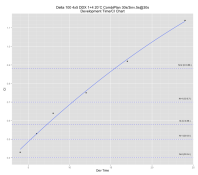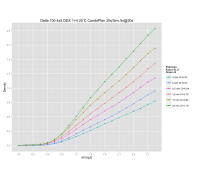dpgoldenberg
Member
- Joined
- Feb 18, 2009
- Messages
- 50
- Format
- Med. Format RF
Rafal,
I'm glad to hear that my suggestions were helpful and that you were able to implement them in R. You might want to try fitting your data to the function I suggested in the earlier thread:
D(x) = a1*ln(1+exp(a2*x + a3))
where D is density, x is exposure (on a logarithmic scale) and a1,a2, a3 are constants. ln is the natural logarithm and exp is the number e raised to the power in the parentheses.
I didn't realize it when I first suggested this function, but I later discovered that it had been introduced for sensitometry in 1920s by Robert Luther, a Professor at the University of Dresden. Over the years, it was found to work remarkably well for lots of film-developer combinations, except for the shoulder region, where it is not applicable at all. There is also a bit of theoretical basis to justify its use.
David
I'm glad to hear that my suggestions were helpful and that you were able to implement them in R. You might want to try fitting your data to the function I suggested in the earlier thread:
D(x) = a1*ln(1+exp(a2*x + a3))
where D is density, x is exposure (on a logarithmic scale) and a1,a2, a3 are constants. ln is the natural logarithm and exp is the number e raised to the power in the parentheses.
I didn't realize it when I first suggested this function, but I later discovered that it had been introduced for sensitometry in 1920s by Robert Luther, a Professor at the University of Dresden. Over the years, it was found to work remarkably well for lots of film-developer combinations, except for the shoulder region, where it is not applicable at all. There is also a bit of theoretical basis to justify its use.
David












